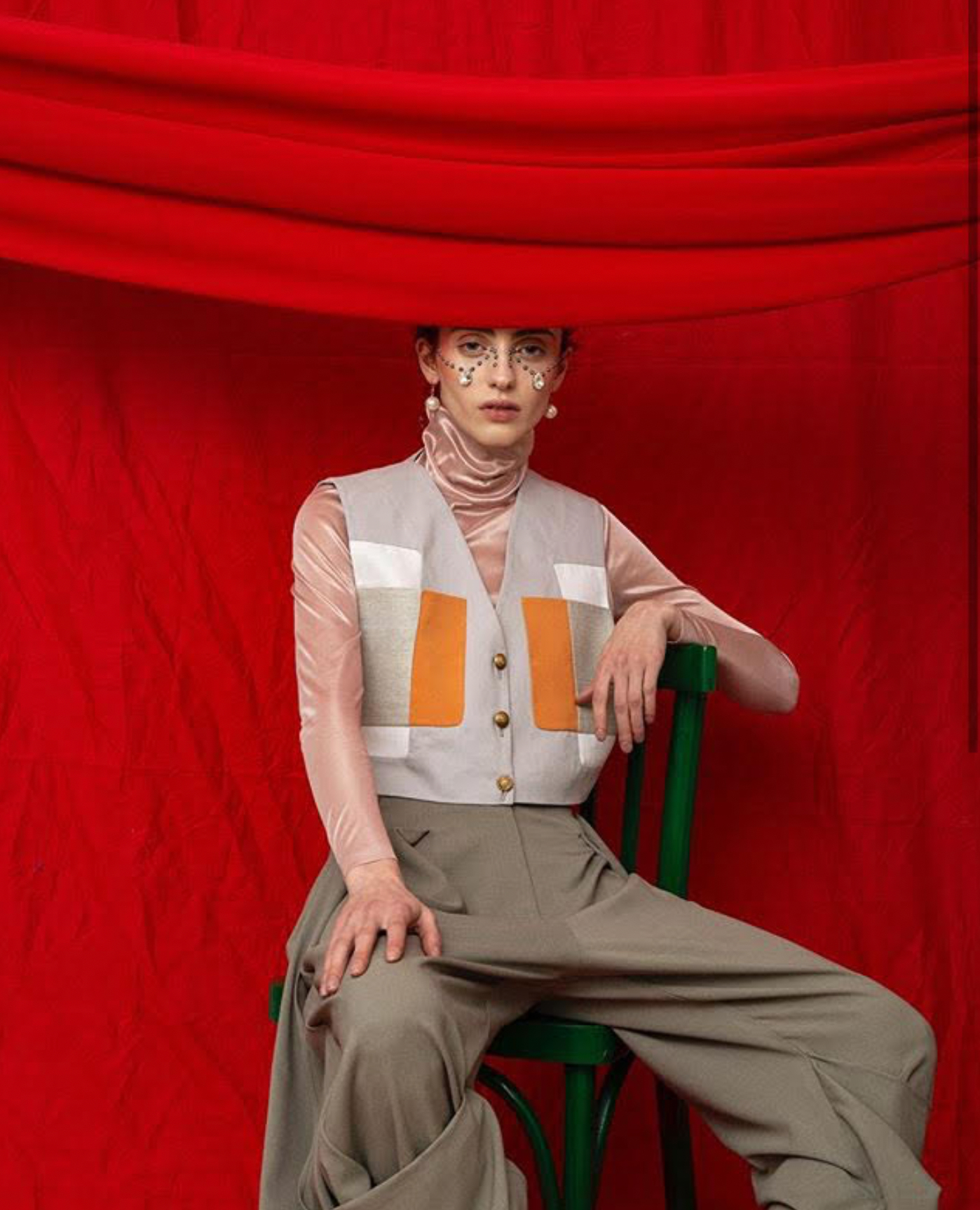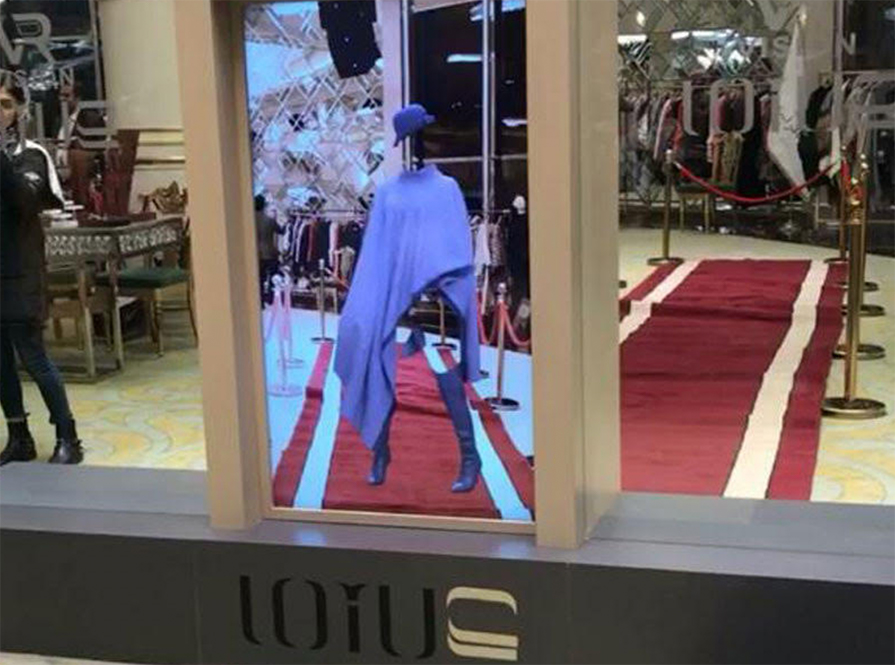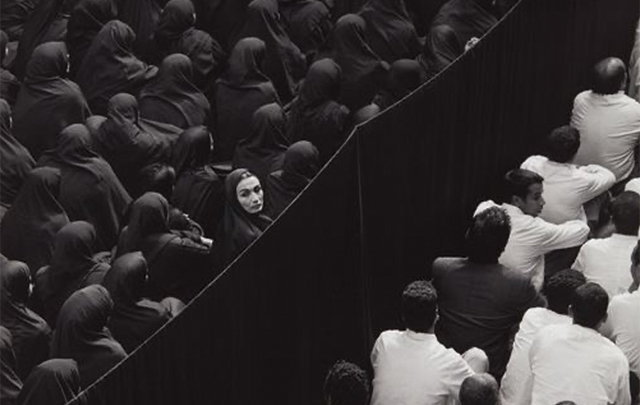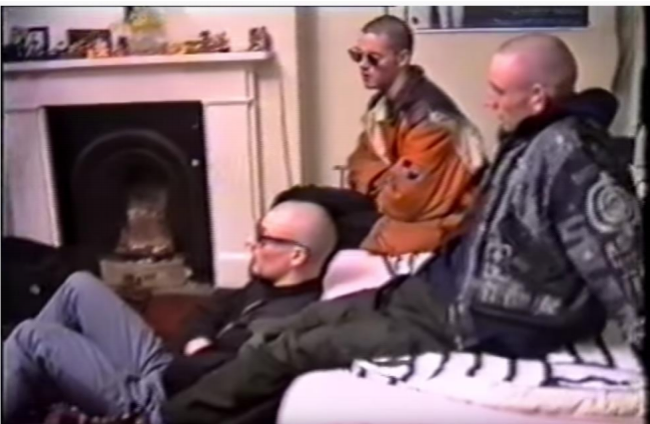Throughout my research, I questioned how social and political forces in Iran contributed toward a fashion industry that is complex, partial, and problematic. I presented my findings in a 30 minute presentation. My research was based in a grounded, phenomenological, feminist-materialist theoretical perspective, through which I considered a series of contemporary Iranian fashion companies and their engagement with embodiment, specifically women’s embodiment and representation, as well as the art historical notion of the gaze. Through unravelling a series of tangled issues related to histories and theories of modesty, veiling, agency, as well as European canons of fashion history and thought, I asked how, and if, a fashion system in Iran is possible, or permissible, under the current regime.
My research questioned how the complex relations of the body and veil might work to challenge and scrutinise the rules of surveillance and the compulsory hijab in Iran. The compulsory rule of hijab instructs women to veil in order to protect and command the male gaze. By considering women’s bodies to be areas of threat, covering the body then aims to render women’s bodies invisible. However, the question remains as to whether veiling is simply a straightforward way to make women’s bodies invisible, or whether it is a form of boundary making? Is the veil a mask, or simply a series of dress arrangements? When it comes to commanding or governing the body, there is no single route with which to approach this topic, nor is there a single meaning or practice.

Bodies are not simply passive objects, as they have been described in studies of power and surveillance by Foucault, when he uses the term ‘docile body’ to describe the submission of collective bodies to the types of power exercised on them. In addition, a dressed body does not associate with a specific meaning. This is especially true when considering veiling as the single image of a modest women in the Islamic regime. In fact, seeing dress as an external object to the body might result in defining a specific meaning to it. However, as Joanne Entwistle suggests, body, self and dress should not be seen to be as layers, but as a totality that emphasises the complex roles of a dressed body (2015).
“Bodies are not simply passive objects, as they have been described in studies of power and surveillance by Foucault, when he uses the term ‘docile body’ to describe the submission of collective bodies to the types of power exercised on them. In addition, a dressed body does not associate with a specific meaning.”
Furthermore, veiling is not necessarily oppressive for women, as it is often portrayed in Orientalist fantasies. The identity of a veiled subject is not simply hidden. Rather, the veil conceals an absence. What is oppressive in Iran is not the veil itself, but the association with the concealed absence which it holds, and the imposition of a dress code on women. In 2017, a brand called Lotus collaborated with VR vision company to create a VR fashion show, erasing models’ bodies as a solution to the banning of fashion shows in Iran. This event raised many controversies and backlashes from public questioning the aim of this show as more than just a solution to enhance the fashion scene in Iran. As Entwistle noted, getting dressed is as intimate as social. What is the ultimate role of fashion in Iran if we are to consider women’s subjectivity when we completely erase them?

While researching the notion of veiling and power relations, I came across the concept of Orientalism. As I read Edward Said’s book (2003), I started to notice a similar pattern of the West practicing power over the East, with the current Iranian regime’s practicing of power over women. The Orient, in Said’s theories, is portrayed and built on as an image of the ‘other’. In this image of the orient, the veil has been fantasized as one of the main characteristics of this ‘other’: a non-modern, non-western object (Secor, 2014).
“What is oppressive in Iran is not the veil itself, but the association with the concealed absence which it holds, and the imposition of a dress code on women”
This signified ‘other’ is a result of this dichotomy of the west and the orient. In this regard, certain objects and spaces are used as borders, such as the veil (Balasescu, 2005). This gendered image of the Other is built up on, and through collective bodies, and not necessarily by individual bodies. Similarly in Iran, the compulsory hijab rule has led to social spaces being split in to private and public, and the border of this dichotomy is negotiated by the extent of veiling. Here, the ‘other’ are women who are seen to be incapable of interpreting themselves. In the shots from Shirin Neshat’s film Fervor, this dichotomy of collective bodies is strongly portrayed by woman’s veils and the film’s monochrome theme, and how it consequently split the social spaces. This photo best represent these social and political borders from an orientalist and Iran’s regime Islamic view, however the reality should be considered much more complex and intersectional.

It might seem that Iran is lacking a fashion industry based on Herbert Blumer’s factors, conceptualised in 1969 (Blumer, 2007 [1969]). However, those factors should be examined based on people’s daily practice, not by institutional rules. It should be considered that change is inevitable for a modern society, so Iran's fashion system, a gradual step-by-step practice, slow and limp, can be a place for new modes of citizenship, which is currently exercised consciously by specific habitus, underground, or in binaries of negotiations.
BIBLIOGRAPHY
- Balasescu, A.H. (2005) ‘Faces and Bodies: Gendered Modernity and Fashion Photography in Tehran’, Gender & History, 17(3), pp. 737–768.
- Blumer, H. (2007 [1969]) ‘Fashion: From Class Differentiation to Collective Selection’, in Barnard, M. (ed.) Fashion Theory: A Reader. London: Routledge, pp. 232-246.
- Cavallaro, D., Warwick, A. (1998) Fashioning The Frame: Boundaries, Dress and Body. Oxford: Berg.
- Entwistle, J. (2015) The Fashioned Body: Fashion, Dress and Social Theory. Oxford: Polity Press.
- O’Cass, A., Lee, W.J., and Siahtiri, V. (2013) ‘Can Islam and Status Consumption Live Together in The House of Fashion Clothing?’, Journal of Fashion Marketing and Management, 17(4), pp. 440–459.
- Said, E. (2003) Orientalism. London: Penguin.
- Tynan, J. (2015) ‘Michel Foucault: Fashioning The Body Politic’, in Rocamora, A., Smelik, A. (eds.) Thinking Through Fashion: A Guide to Key Theorists. London: I. B. Tauris & Company, Limited, pp. 184-199.

 All I want is...
All I want is...

